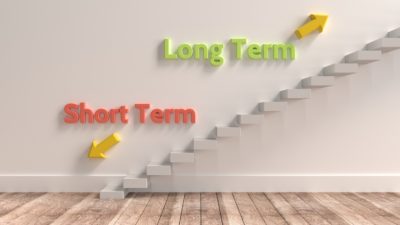I don’t know about you, but I always like to back companies with the strong prospect of rising sales.
My theory is simple. Rising sales should translate into rising profits, and rising profits should translate into rising dividends…
All of which should then combine into a rising share price!
Sadly, few quoted companies ever issue specific sales guidance
Too often, the best we get is being told about current-year sales being “in line with expectations“.
But there are a few companies that are bold enough to predict something like “sales growth in the low-to-mid single digits” for the current year.
Still, official guidance about sales beyond the current year is almost non-existent.
You see, public companies rarely commit to anything so ‘long term’ in public for fear of getting it all wrong…
Unless the business operates in the pharmaceutical sector perhaps…
Sales could jump from $26bn to $45bn within 10 years
For me, there was one particular highlight from the recent attempt by Pfizer to buy AstraZeneca (LSE: AZN) (NYSE: AZN.US).
Forget all the soundbites about job losses, UK science and tax ruses…
…it was the TEN-year sales prediction made by AstraZeneca boss Pascal Soriot that caught my attention.
To help fend off the bid, “create significant value to shareholders” and no doubt keep himself in a job…
…Mr Soriot evaluated the group’s product pipeline projections and claimed his firm’s annual sales would top $45bn by 2023.
Which I have to say looked an assertive target given sales last year fell 6% to $26bn.
(And that $45bn target is even more assertive when you consider Mr Soriot’s projections include Astra’s sales flat-lining between now and 2017.)
Nonetheless, turning $26bn into $45bn over ten years equates to an increase of almost 6% per annum.
And while biased beyond 2017, 6% compound annual revenue growth during the next decade does not seem too wildly optimistic to me.
Demand could grow by 10% per annum for the next 10 years
Mr Soriot’s projections got me thinking about GlaxoSmithKline (LSE: GSK) (NYSE: GSK.US).
I mean, if one large-cap pharma group can predict upbeat sales guidance for the next ten years, surely its major sector rival might enjoy rising revenues for some time to come, too.
Sadly, there have been no precise projections from Glaxo boss Sir Andrew Witty.
But going somewhat unnoticed during the AstraZeneca/Pfizer face-off was a substantial 3-part deal between Glaxo and Swiss pharma firm Novartis.
The deal involved Glaxo creating a new joint venture consumer healthcare business and selling its oncology portfolio for up to $16bn.
But the interesting bit for me concerned Glaxo acquiring the Vaccines business of Novartis for just over $7bn.
You see, buried in the announcement was this sentence:
“Demand for vaccination remains significant with the global vaccine market projected to grow approximately 10% per annum over the next 10 years.“
So, not exactly a sales projection, but a pretty good guide as to what the Glaxo’s Vaccines division — the largest in the world — could be expected to achieve during the next decade.
What’s more, within the accompanying presentation to City institutions, Glaxo referred to its respiratory products, HIV treatments and consumer healthcare brands growing at between 4% and 8% per annum.
Given that confidence, I’d like to think Glaxo could at least achieve the 6% per annum top-line growth being touted by Astra right now,






